Cinema of Australia
| Cinema of Australia | |
|---|---|
|
The earliest known feature length narrative film in the world was the Australian production, The Story of the Kelly Gang (1906). | |
| Number of screens | 1,991 (2011)[1] |
| • Per capita | 9.8 per 100,000 (2011)[1] |
| Main distributors |
Roadshow/Warner 26.0% Paramount 19.0% Fox 12.0%[2] |
| Produced feature films (2011)[3] | |
| Fictional | 29 (67.4%) |
| Animated | 4 (9.3%) |
| Documentary | 10 (23.3%) |
| Number of admissions (2011)[4] | |
| Total | 85,000,000 |
| • Per capita | 4.3 (2010)[5] |
| Gross box office (2011)[4] | |
| Total | A$1.09 billion |
| National films | A$45.2 million (4.1%) |
The Australian film industry has its beginnings with the 1906 production of The Story of the Kelly Gang, the earliest feature film ever made. Since then, many films have been produced in Australia, a number of which have received international recognition. Many actors and filmmakers started their careers in Australian films, a large number of whom have acquired international reputations, and a number of whom have found greater financial benefits in careers in larger film producing centres, such as in the United States.
Cinema in Australia began with the first public screenings of films in Australia in October 1896, within a year of the world's first screening in Paris by Lumière brothers. The first Australian exhibition took place at the Athenaeum Hall in Collins Street, Melbourne, to provide alternative entertainment for the dance hall patrons. The venue would continue screenings, but these were all short films.
Commercially successful Australian films have included Paul Hogan's "Crocodile" Dundee, Baz Luhrmann's Moulin Rouge! , and Chris Noonan's Babe. Other award winning productions include Picnic at Hanging Rock, Gallipoli, The Tracker, Shine and Ten Canoes.
Australian actors of renown include Errol Flynn, Peter Finch, Rod Taylor, Guy Pearce, Nicole Kidman, Geoffrey Rush, Toni Collette, Hugh Jackman, Russell Crowe, Eric Bana, Cate Blanchett, Heath Ledger, Chris Hemsworth, Liam Hemsworth and Sam Worthington.
History
The Australian film history has been characterized as one of 'boom and bust' due to the unstable and cyclical nature of its industry; there have been deep troughs when few films were made for decades and high peaks when a glut of films reached the market.[6]
Pioneer days – 1890s–1910
The Athanaeum Hall in Collins Street, Melbourne, was a dance hall from the 1880s, which from time to time would provide alternative entertainment to patrons. In October 1896, it exhibited the first movie shown in Australia, within a year of the first public screening of a film in Paris on 28 December 1895 by the French Lumière brothers. The Athanaeum would continue screenings, but these early screenings were all short films. The earliest feature length narrative film in the world was the Australian produced The Story of the Kelly Gang (1906), also shown at the Athenaeum. The film was written and directed by Charles Tait and included several of his family. The film was also exhibited in the United Kingdom, and was commercially very successful.
Melbourne was also home of one of the world's first film studios, the Limelight Department, operated by The Salvation Army between 1897 and 1910.[7] The Limelight Department produced evangelical material for use by the Salvation Army, as well as private and government contracts. In its 19 years of operation, the Limelight Department produced about 300 films of various lengths, making it the largest film producer of its time. The major innovation of the Limelight Department came in 1899 when Herbert Booth and Joseph Perry began work on Soldiers of the Cross, described by some as the first feature-length film ever produced. Soldiers of the Cross fortified the Limelight Department as a major player in the early film industry. The Limelight Department was commissioned to film the Federation of Australia.
Boom and bust – 1910s–1920s
The 1910s was a "boom" period in Australian cinema. It began slowly in the 1900s, and 1910 saw 4 narrative films released, then 51 in 1911, 30 in 1912, and 17 in 1913, and back to 4 in 1914, when the beginning of World War I brought an end to film making.[8] While these numbers may seem small, Australia was one of the most prolific film-producing countries at the time. In all, between 1906 and 1928, 150 narrative feature films were made, of which almost 90 were made between 1910 and 1912.[9]
There was a general consolidation in the early 1910s in the production, distribution and exhibition of films in Australia which saw by 1912 the merger of numerous independent producers into Australasian Films and Union Theaters which established control over film distributors and cinemas and required smaller producers to deal with the cartel. Some view the arrangement as opening the way for American distributors in the 1920s to sign exclusive deals with Australian cinemas to exhibit only their products, thereby shutting out the local product and crippling the local film industry.[10]
There are various other explanations for the decline of the industry in the 1920s. Some historians point to falling audience numbers, a lack of interest in Australian product and narratives, and Australia's participation in the war. Also, there was an official ban on bushranger films in 1912.[11] With the suspension of local film production, Australian cinema chains sought alternative products in the United States and realised that Australian-produced films were much more expensive than the imported product, which were priced cheaply as production expenses had already been recouped in the home market. To redress this imbalance, the federal government imposed a tax on imported film in 1914, but this was removed by 1918.
Whatever the explanation, by 1923, American films dominated the Australian market with 94% of all exhibited films coming from that country.[12]
1930s–1960s

In 1930, F.W. Thring (1883–1936) established the Efftee Studios based in Melbourne to make talking films using optical sound equipment imported from the USA. The first sound films produced were in 1931, when the company produced Diggers (1931), A Co-respondent's Course (1931), The Haunted Barn (1931) and The Sentimental Bloke (1932). During the five years of its existence, Efftee produced nine features, over 80 shorts and several stage productions. Notable collaborators included C. J. Dennis, George Wallace and Frank Harvey. Film production continued only until 1934, when it ceased as a protest over the refusal of the Australian government to set Australian film quotas, followed soon by Thring's death. It was estimated Thring lost over ₤75,000 of his own money on his filmmaking and theatrical ventures.[13]
Cinesound Productions was established in 1931 with Ken G. Hall as its main driving force.[14][15] The company was one of Australia's first feature film production companies which operated into the early 1940s and became Australia's leading domestic studio, based on the Hollywood model. The company also used the Hollywood model for the promotion of its films and attempted to promote a star system. It was particularly successful with the On Our Selection (1932) series of comedies, based on the popular writings of author Steele Rudd, which featured the adventures of a fictional Australian farming family, the Rudds, and the perennial father-and-son duo, 'Dad and Dave'. Despite its ambitions, Cinesound produced only 17 feature films, all but one being directed by Ken Hall. The company was financially successful. The company ceased making feature films with the outbreak of World War II.
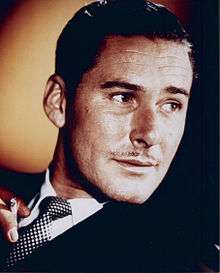
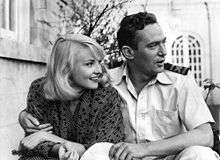
In 1933, In the Wake of the Bounty, directed by Charles Chauvel, cast Tasmanian born Errol Flynn in a leading role,[16] before he went on to a celebrated Hollywood career. Chauvel directed a number of successful Australian films, including 1944's World War II classic The Rats of Tobruk which starred Peter Finch and Chips Rafferty and 1955's Jedda, which was notable for being the first Australian film to be shot in colour, and the first to feature Aboriginal actors in lead roles and to be entered at the Cannes Film Festival.[17]
The Cinematograph Films Act 1927 established a quota of films that had to be shown in British cinemas that would be shot in Great Britain as well as nations in the British Empire that stimulated Australian film production. However the Cinematograph Films Act 1938 mollified the British film industry by specifying only films made by and shot in Great Britain would be included in the quota that removed Australian films from the British local film quota, which saw the loss of a guaranteed market for Australian films.[18]
The first Australian Oscar was won by 1942's Kokoda Front Line!, directed by Ken G. Hall.[19] Chips Rafferty and Peter Finch were prominent international stars of the period. Rafferty's onscreen image as a lanky, laconic bushman struck a chord with filmgoers and he appeared in iconic early Australian films such as Forty Thousand Horsemen, The Rats of Tobruk, The Overlanders and Eureka Stockade (Overlanders and Eureka were part of a series of Australian themed films produced by Britain's iconic Ealing Studios). In Hollywood, Rafferty also appeared in Australian themed films, including The Desert Rats, The Sundowners and Mutiny on the Bounty. Similarly, Peter Finch starred in quintessentially Australian roles (such as Digger or stockman) through a series of popular films and had a successful and diverse screen career in Britain and the United States.
Both Ron Randell and Rod Taylor began their acting careers in Australia initially in radio and on stage before appearing in such Australian films as Smithy (1946) for the former and Long John Silver (1954) for the latter before transferring to the United States to become a Hollywood leading men in a number of films of the late 1940s (Randell) and both from the 1950s onwards' Taylor had with starring roles in The Time Machine (1960) and The Birds (1963) as well as several American TV series such as Hong Kong.
Several notable films based on stories from Australian literature (generally with strong rural themes) were made in Australia in the 1950s – but by British and American production companies, including A Town Like Alice (1956) which starred Virginia McKenna and Peter Finch; The Shiralee (1957) also starring Peter Finch with Australian actors Charles Tingwell, Bill Kerr and Ed Devereaux in supporting roles; Robbery Under Arms, again starring Finch in 1957; and Summer of the Seventeenth Doll (1959), starring Ernest Borgnine, John Mills and Angela Lansbury; and in 1960, The Sundowners was shot partly in the Snowy Mountains of New South Wales with foreign leads Deborah Kerr, Robert Mitchum, and Peter Ustinov but a supporting cast including Australians Chips Rafferty, John Meillon and Leonard Teale.
In 1958, the Australian Film Institute was formed and in the same year began awarding the Australian Film Institute Awards.
Australian film production was reaching a low ebb with few notable productions during the 1960s.[20] The 1966 comedy They're a Weird Mob, starring Walter Chiari, Chips Rafferty and Clare Dunne was a rare hit of the period which also documented something of the changing face of Australian society: telling the story of a newly arrived Italian immigrant who, working as a labourer in Sydney, becomes mates with his co-workers, despite some difficulties with Australian slang and culture. The film foreshadowed the successful approaching "New Wave" of Australian cinema of the 1970s that would often showcase colloquial Australian culture.
There continued to be an appeal for Australian actors in Hollywood as "action-men", with the casting of Australian George Lazenby to replace Sean Connery portraying the superspy James Bond in the 1969 film On Her Majesty's Secret Service.
Film renaissance – 1970s and 1980s
John Gorton, Prime Minister of Australia from 1968–1971, initiated several forms of government support for film and the arts. The Gough Whitlam government (1972–75) continued to support Australian film and state governments also established assistance programs.
These measures led to the resurgence of Australian film called the Australian New Wave, which lasted until the mid-late 1980s. The era also marked the emergence of the "Ozploitation" style – characterised by the exploitation of colloquial Australian culture.
Films such as Picnic at Hanging Rock (Peter Weir, 1975) and Sunday Too Far Away (Ken Hannam, 1975) made an impact on the international arena. The 1970s and '80s are regarded by many as a 'golden age' of Australian cinema, with many successful films, from the dark science fiction of Mad Max (George Miller, 1979) to the romantic comedy of "Crocodile" Dundee (Peter Faiman, 1986) and the emergence of such film directing auteurs as Gillian Armstrong, Phillip Noyce and Bruce Beresford.
A major theme of Australian cinema which matured in the 1970s was one of survival in the harsh Australian landscape. A number of thrillers and horror films dubbed "outback gothic" have been created, including Wake in Fright, Walkabout, The Cars That Ate Paris and Picnic at Hanging Rock in the 1970s, Razorback and Shame in the 1980s and Japanese Story, The Proposition and Wolf Creek in the 2000s. These films depict the Australian bush and its creatures as deadly, and its people as outcasts and psychopaths. These are combined with futuristic post-apocalyptic themes in the Mad Max series. 1971's Walkabout was a British film set in Australia which was a forerunner to many Australian films related to indigenous themes and introduced David Gulpilil to cinematic audiences. 1976's The Chant of Jimmie Blacksmith directed by Fred Schepisi was an award winning historical drama from a book by Thomas Keneally about the tragic story of an Aboriginal Bushranger.
Classic stories from Australian literature and Australian history continued to be popular subjects for cinematic adaptation during the 1970s and 1980s. Gillian Armstrong's My Brilliant Career (1979) featured Judy Davis and Sam Neill in early lead roles. 1982's We of the Never Never followed up on the theme of the female experience of life in the Australian bush. 1982's The Man from Snowy River starring Tom Burlinson and Sigrid Thornton dramatised the classic Banjo Paterson poem of that name and became one of the all time box-office successes of Australian cinema. In addition to the serious historical dramas popular in the 1970s, a number of films celebrating and satirizing Australian colloquial culture were produced over the decade, including: The Adventures of Barry McKenzie (1972), Alvin Purple (1973), and Barry McKenzie Holds His Own (1974). The Barry McKenzie films saw performing-artist and writer Barry Humphries collaborating with director Bruce Beresford. In 1976, Peter Finch was awarded a posthumous Academy Award for Best Actor for his role in the American satire Network, becoming the first Australian to win an Oscar for best actor.[21]
1980's Breaker Morant starring Jack Thompson and Bryan Brown dramatised the controversial trial of an Australian soldier during the Boer War and was followed by 1981's World War I drama Gallipoli directed by Peter Weir and starring Mel Gibson. These films, now considered classics of Australian cinema explored contemporary Australian identity through dramatic episodes in Australian history. Gibson went on to further success in 1982's The Year of Living Dangerously before transferring to pursue his Hollywood career as an actor and director. Many other Australian stars would follow his path to international stardom in the coming decades. The Year of Living Dangerously was directed by Peter Weir, who also made a successful transition to Hollywood. Weir contributed to the screenplay along with its original author Christopher Koch, and playwright David Williamson. Williamson rose to prominence in the early 1970s, and has gone on to write several other original scripts and screenplays made into successful Australian films including: Don's Party (1976); Gallipoli (1981), Emerald City (1988), and Balibo (2009).[22]
Actor/comedian Paul Hogan wrote the screenplay and starred in the title role in his first film, "Crocodile" Dundee (1986), about a down-to-earth hunter who travelled from the Australian Outback to New York City. The movie became the most successful Australian film ever, and launched Hogan's international film career. Following the success of "Crocodile" Dundee Hogan starred in the sequel, "Crocodile" Dundee II in 1988. 1988 also saw the release of the drama Evil Angels (released outside of Australia and New Zealand as A Cry in the Dark)[23] about the Lindy Chamberlain saga, in which a baby was taken by a dingo at Ayers Rock and her mother was accused of having murdered the child.
Nicole Kidman began appearing in Australian children's TV and Film in the early 1980s – including starring roles in BMX Bandits and Bush Christmas. During the 1980s, she appeared in several Australian productions, including Emerald City (1988), and Bangkok Hilton (1989), and in 1989, Kidman starred in Dead Calm alongside Sam Neill and Billy Zane. The thriller garnered strong reviews and Hollywood roles followed.[24]
1990–present
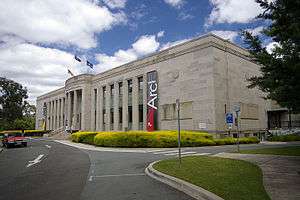
The 1990s proved a successful decade for Australian film and introduced several new stars to a global audience. Low budget films such as the comedy/drama Muriel's Wedding, starring Toni Collette,[25] the gently satirical suburban comedy The Castle directed by Rob Sitch (which cast Eric Bana in his first prominent film role), and Baz Luhrmann's flamboyant Strictly Ballroom[26] each attained commercial and critical success, and explored quirky characters inhabiting contemporary Australian suburbia – marking something of a departure from the Outback and historical sagas which obtained success in the 1970s and 1980s. Stephan Elliott's 1994 film Priscilla Queen of the Desert mixed traditional outback cinematography and landscape with contemporary urban sub-culture: following three drag queens on a road trip to Central Australia.
While a number of major international stars gained early prominence in Australia over the period, an important stable of established and emerging local stars with prodigious film credits remained prominent, including screen veterans Charles Tingwell, Bill Hunter, Jack Thompson, Bryan Brown and Chris Haywood.
The World War II drama Blood Oath (1990) debuted both Russell Crowe and Jason Donovan, in minor cinematic roles. Crowe demonstrated his versatility as an actor in this early period of his career by starring soon after as a street gang Melbourne skinhead in 1992's Romper Stomper and then as an inner-Sydney working class gay man in 1994's The Sum of Us before transferring to the USA to commence his Hollywood career.
George Miller's Babe (1995) employed new digital effects to make a barnyard come alive and went on to become one of Australia's highest-grossing films. The 1996 drama Shine achieved an Academy Award for Best Actor award for Geoffrey Rush and Gregor Jordan's 1999 film Two Hands gave Heath Ledger his first leading role. After Ledger's successful transition to Hollywood, Jordan and Ledger collaborated again in 2003 with Ledger playing the iconic bushranger title role in the film Ned Kelly, which co-starred British actress Naomi Watts.
The canon of films related to Indigenous Australians also increased over the period of the 1990s and early 21st Century, with Nick Parson's 1996 film Dead Heart featuring Ernie Dingo and Bryan Brown;[27] Rolf de Heer's The Tracker, starring Gary Sweet and David Gulpilil;[28] and Phillip Noyce's Rabbit-Proof Fence[29] in 2002. In 2006, Rolf de Heer's Ten Canoes became the first major feature film to be shot in an indigenous language and the film was recognised at Cannes and elsewhere.
The shifting demographics of Australia following post-war multicultural immigration was reflected in Australian cinema through the period and in successful films like 1993's The Heartbreak Kid; 1999's Looking for Alibrandi; 2003's Fat Pizza; the Wog Boy comedies and 2007's Romulus, My Father which all dealt with aspects of the migrant experience or Australian subcultures.[30]
Rob Sitch and Working Dog Productions followed the success of The Castle with period comedy The Dish, which was the highest grossing Australian film of the Year 2000 and entered the top ten list of highest grossing Australian films. Big budget Australian-international co-productions Moulin Rouge! (Baz Luhrmann, 2001) and Happy Feet (which won the Academy Award for Best Animated Feature for filmmaker George Miller in 2006) also entered the top ten list during the first decade of the new century. Baz Luhrmann directed a series of international hits and returned to Australia for the production of 2008's Australia, which showcased a host of Australian stars including Nicole Kidman, Hugh Jackman and David Wenham and went on to become the second highest-grossing film in Australian cinematic history.
Lantana, directed by Ray Lawrence attained critical and commercial success in 2001 for its examination of a complex series of relationships in suburban Sydney, and events surrounding a mysterious crime. It won seven AFI Awards including Best Picture, Best Director, Best Actor for Anthony LaPaglia and Best Actress for Kerry Armstrong.
Emerging star Sam Worthington had early lead roles in the 2002 mobster black comedy Dirty Deeds and 2003's crime caper Gettin' Square. Gettin Square also featured rising star David Wenham who demonstrated versatility with a string of critically acclaimed roles including the title role in Paul Cox's 1999 biopic Molokai: The Story of Father Damien and the 2001 thriller The Bank, directed by the politically conscious film director Robert Connolly.
In 2005, Little Fish marked a return to Australian film for actress Cate Blanchett and won five Australian Film Institute Awards including Best Actor for Hugo Weaving, Best Actress for Blanchett and Best Supporting Actress for screen veteran Noni Hazlehurst.
In 2008, the documentary film celebrating the romps of the Australian New Wave of 1970s and 1980s low-budget cinema: Not Quite Hollywood: The Wild, Untold Story of Ozploitation! The film was directed by Mark Hartley and interviews filmmakers including Quentin Tarantino, Dennis Hopper, George Miller and Barry Humphries.
The early 2000s were generally not successful years for Australian cinema, with several confronting dramas proving unpopular at the box office. In 2008, no Australian movies made $3 million at the box office, but a conscious decision by film-makers to broaden the types of films being made as well as the range of budgets produced a series of box-office hits at the close of the decade. Strong box office performances were recorded in 2009–10 by Bruce Beresford's Mao's Last Dancer; the Aboriginal musical Bran Nue Dae the dramatization of John Marsden's novel Tomorrow, When the War Began; and the crime drama Animal Kingdom which featured major Australian screen stars Ben Mendelsohn, Joel Edgerton, Guy Pearce and Jackie Weaver. Animal Kingdom achieved success at the 2010 Australian Film Institute Awards and was acclaimed at film festivals around the world.[31] Tomorrow, When the War Began became the highest-grossing domestic film of 2010 and it was nominated for nine Australian Film Institute Awards.[32][33]
Other notable films of the period included Balibo (2009) starring Anthony LaPaglia; MIddle Eastern crime flick Cedar Boys (2009) Directed by Serhat Caradee, the animated feature Mary and Max; and the 2010 World War I drama Beneath Hill 60, directed by Jeremy Sims and starring Brendan Cowell.
Present
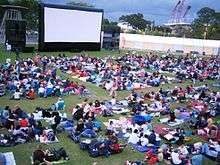
The Australian film industry continues to produce a reasonable number of films each year, but in common with other English-speaking countries, Australia has often found it difficult to compete with the American film industry, the latter helped by having a much larger home market. The most successful Australian actors and film-makers are easily lured by Hollywood and rarely return to the domestic film industry.
Since Rupert Murdoch, the head of Fox Studios and an Australian, moved the new Fox studios to Sydney, some US producers have chosen to film at Fox's state of the art facilities, as production costs in Sydney are well below US costs. Studios established in Australia, like Fox Studios Australia and Warner Roadshow Studios, host large international productions like The Matrix and Star Wars II and III.
Government support
John Gorton, Prime Minister of Australia from 1968–1971, initiated several forms of Government support for Australian film and the arts, establishing the Australian Council for the Arts, the Australian Film Development Corporation and the National Film and Television Training School.[34] Prime Minister Gough Whitlam continued to support Australian film. The South Australian Film Corporation was established in 1972 to promote and produce films, while the Australian Film Commission was created in 1975 to fund and produce internationally competitive films.
The Federal Australian government had supported the Australian film industry through the funding and development agencies of Film Finance Corporation Australia, the Australian Film Commission and Film Australia. In 2008 the three agencies were consolidated into Screen Australia.
There is an ongoing debate of the need and role of government support for the Australian film industry. Some argue in favour of government support as being the only way that the local film industry can compete against the hegemony of Hollywood. The argument against government support is that the industry is viable without support and will become stronger if increasingly globalised market forces are allowed full and untrammeled play. Others argue that a film industry in itself has little value. The history of the industry in Australia is to some extent a result of the ascendancy of one position over the other.
Highest-grossing Australian films
| Rank | Title | Year of release | Budget (A$) | Australian gross (A$) | Worldwide gross (US$) |
|---|---|---|---|---|---|
| 1 | Mad Max: Fury Road | 2015 | $150,000,000 | $49,000,000 | $375,836,354 |
| 2 | "Crocodile" Dundee | 1986 | $11,500,000 | $47,707,045[35] | $328,203,506 |
| 3 | Australia | 2008 | $200,000,000 (US$130,000,000, US$78,000,000 after tax incentives)[36] | $36,780,000 | $211,342,221 |
| 4 | Babe | 1995 | $30,000,000 | $36,770,000 | $254,134,910 |
| 5 | Happy Feet | 2006 | $132,740,000 | $31,800,000 | $384,300,000 |
| 6 | Moulin Rouge! | 2001 | $52,000,000 | $27,700,000 | $179,213,434 |
| 7 | The Dressmaker | 2015 | $17,000,000 | $25,000,000 | – |
| 8 | "Crocodile" Dundee II | 1988 | $15,800,000 | $24,900,000 | $239,606,210 |
| 9 | Strictly Ballroom | 1992 | $3,000,000 | $21,800,000 | $80,000,000 |
| 10 | Red Dog | 2011 | $8,500,000 | $21,337,009 (as of 12 December 2011) | – |
Other popular Australian films
High grossing Australian films from earlier decades include:
- 1900s – The Story of the Kelly Gang (1906) (gross £20,000)[37]
- 1910s – The Fatal Wedding (1911) (£18,000),[38] The Life Story of John Lee, or The Man They Could Not Hang (1912) (£20,000),[37] The Martyrdom of Nurse Cavell (1915) (£25,000)[37]
- 1920s – For the Term of His Natural Life (1927) (over £40,000)[39]
- 1930s – On Our Selection (1932) (£60,000),[40] The Silence of Dean Maitland (1934) (£50,000)[40]
- 1940s – Forty Thousand Horsemen (1940) (£130,000),[41] Smithy (1946) (over £50,000),[40] The Overlanders (1946) (£250,000),[40] Sons of Matthew (1949)
- 1950s – Walk Into Paradise (1956)
- 1960s – They're a Weird Mob (1966) (over $2 million)[42]
- 1970s – Alvin Purple (1973) ($4.72 million), Picnic at Hanging Rock (1975) (over $5 million), Mad Max (1979)[42]
Personalities
Directors
Actors
-

Jacki Weaver, star of Caddie and Animal Kingdom
-
.jpg)
John Jarratt, star of Wolf Creek
-

Joel Edgerton, star of The Hard Word
-

Judy Davis, star of The Dressmaker
-
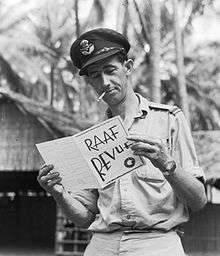
Chips Rafferty, star of The Sundowners.
-

Naomi Watts, star of Ned Kelly.
-

Toni Collette, star of Muriel's Wedding.
-

Abbie Cornish, star of Somersault.
-
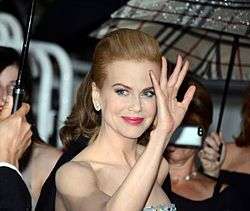
Nicole Kidman, first Australian to win Best Actress Oscar and one of Hollywood's highest paid performers. She is commonly referred to as Hollywood's top import. Kidman is considered one of Hollywood's biggest stars and is the most successful Australian actress.
-

Hugh Jackman, star of Australia.
-

Cate Blanchett, the first Australian actress to win two Academy Awards and the most nominated Australian in the acting categories overall with 8 nomination.
-

Heath Ledger, star of Two Hands.
-
.jpg)
Chris Hemsworth, who has found recent success as the titular role in the Thor film series
-

Ben Mendelsohn, star of Animal Kingdom
The Australian film industry has produced a number of successful actors, actresses, writers, directors and filmmakers many of whom have been known internationally.
Actors
Actresses
See also
- Screen Australia
- Australian Film Commission
- Australian Directors Guild
- Australian Writers' Guild
- Film Australia
- Film Finance Corporation Australia
- Film Victoria
- New South Wales Film and Television Office
- Queensland Film Corporation
- ScreenWest (West Australian Film Corporation)
- South Australian Film Corporation
- Tasmanian Film Corporation
- List of Australian films
- List of films set in Australia
- List of films shot in Adelaide
- List of films shot in Darwin
- List of films shot in Melbourne
- List of films shot in Queensland
- List of films shot in Sydney
- List of films shot in Tasmania
- List of films shot in Western Australia
- List of cinema of the world
- Television in Australia
- World cinema
References
- 1 2 "Table 8: Cinema Infrastructure – Capacity". UNESCO Institute for Statistics. Retrieved 5 November 2013.
- ↑ "Table 6: Share of Top 3 distributors (Excel)". UNESCO Institute for Statistics. Retrieved 5 November 2013.
- ↑ "Table 1: Feature Film Production – Genre/Method of Shooting". UNESCO Institute for Statistics. Retrieved 5 November 2013.
- 1 2 "Table 11: Exhibition – Admissions & Gross Box Office (GBO)". UNESCO Institute for Statistics. Retrieved 5 November 2013.
- ↑ "Cinema – Admissions per capita". Screen Australia. Retrieved 9 November 2013.
- ↑ David Stratton, The Avocado Plantation: Boom and Bust in the Australian Film Industry, Sydney: Pan Macmillan, 1990
- ↑ Information at ABS website
- ↑ Andrew Pike and Ross Cooper, Australian Film 1900–1977: A Guide to Feature Film Production, Melbourne: Oxford University Press, 1998, 1 – 49
- ↑ Albert Moran & Errol Vieth, Historical Dictionary of Australian and New Zealand Cinema, Lanham, Maryland: Scarecrow Press, 2005, 32
- ↑ Australian screen, http://australianscreen.com.au/titles/picture-show-man/clip1/
- ↑ Reade, Eric (1970) Australian Silent Films: A Pictorial History of Silent Films from 1896 to 1926. Melbourne: Lansdowne Press, 59. See also Routt, William D. More Australian than Aristotelian:The Australian Bushranger Film,1904–1914. Senses of Cinema 18 (January–February), 2002. The banning of bushranger films in NSW is fictionalised in Kathryn Heyman's 2006 novel, Captain Starlight's Apprentice.
- ↑ Albert Moran & Errol Vieth, Historical Dictionary of Australian and New Zealand Cinema, Lanham, Maryland: Scarecrow Press, 2005, 30
- ↑ Graham Shirley and Brian Adams, Australian Cinema:The First Eighty Years, Currency Press, p125
- ↑ UNESCO HONOURS CINESOUND MOVIETONE PRODUCTIONS – Society of Motion Picture and Television Engineers (Australia Section)
- ↑ Ken G Hall Award goes to the late Tom Nurse – Australian Film Commission News & Events. 27 November 2003.
- ↑ In the Wake of the Bounty (1933) on ASO – Australia's audio and visual heritage online
- ↑ Festival de Cannes – 11–22 May 2011 Archived 18 January 2012 at the Wayback Machine.
- ↑ 'Greater Union Group Half-year's Profit', The Sydney Morning Herald, Wednesday 4 January 1939 p 10
- ↑ Kokoda Front Line! (1942) on ASO – Australia's audio and visual heritage online
- ↑ The Australian Film Institute | Past Winners
- ↑ http://www.screenaustralia.gov.au/australian_productions/F_A_Success/Academy_42_89.asp Archived 26 February 2011 at the Wayback Machine.
- ↑ David Williamson – IMDb
- ↑ "A Cry in the Dark (1988) – Release dates". IMDb.com. Retrieved 14 June 2012.
- ↑ Dead Calm. Variety.com. 1 January 2007. Retrieved 10 March 2007.
- ↑ Muriel's Wedding (1994) on ASO – Australia's audio and visual heritage online
- ↑ Strictly Ballroom (1992) on ASO – Australia's audio and visual heritage online
- ↑ Dead Heart (1996) on ASO – Australia's audio and visual heritage online
- ↑ The Tracker (2002) on ASO – Australia's audio and visual heritage online
- ↑ Rabbit-Proof Fence (2002) on ASO – Australia's audio and visual heritage online
- ↑ Archived 23 July 2011 at the Wayback Machine.
- ↑ Maddox, Garry (11 December 2010). "Good year for Australian films as they switch bleak for broad". The Sydney Morning Herald.
- ↑ Lynch, Sean (17 September 2010). "Tomorrow When The War Began Biggest Film Of 2010". watchoutfor.com.au. Retrieved 31 October 2010.
- ↑ "The Australian Film Institute | AFI Award Winners and Nominees Ceremony". Afi.org.au. Archived from the original on 16 December 2013. Retrieved 19 December 2010.
- ↑ In office – John Gorton – Australia's PMs – Australia's Prime Ministers
- ↑ AUSTRALIA – A Baz Luhrmann Film " Second Highest Grossing Australian Film of All Time Archived 24 March 2010 at the Wayback Machine.
- ↑ McClintock, Pamela (24 November 2008). "Hollywood stuffs Thanksgiving slate". Variety.
- 1 2 3 "£100,000 SPENT.". The Advocate. Burnie, Tas.: National Library of Australia. 5 January 1928. p. 6. Retrieved 5 May 2013.
- ↑ "AUSTRALIAN FILMS.". The Daily News. Perth: National Library of Australia. 18 December 1931. p. 11 Edition: HOME (FINAL) EDITION. Retrieved 5 May 2013.
- ↑ "EVA NOVAK GONE.". The Daily News. Perth: National Library of Australia. 4 May 1928. p. 10 Edition: HOME (FINAL) EDITION. Retrieved 5 May 2013.
- 1 2 3 4 "THE RESEARCH BUREAU HOLDS AN AUTOPSY.". Sunday Mail. Brisbane: National Library of Australia. 17 February 1952. p. 11. Retrieved 5 May 2013.
- ↑ "OUR FUTURE IN FILM INDUSTRY.". The Courier-Mail. Brisbane: National Library of Australia. 4 December 1946. p. 2. Retrieved 5 May 2013.
- 1 2 Film Victoria – Australian Films at the Australian Box Office
Literature
Encyclopedia and reference
- Goldsmith, Ben, Ryan, Mark David, and Lealand, Geoff Eds. "Directory of World Cinema : Australia and New Zealand 2". Bristol: Intellect, 2014. ISBN 9781841506340
- Murray, Scott, ed. Australian Film: 1978–1994. Melbourne: Oxford University Press, 1995. ISBN 978-0-19-553777-2
- Pike, Andrew and Ross Cooper. Australian Film: 1900–1977. revised ed. Melbourne: Oxford University Press, 1998. ISBN 978-0-19-550784-3
- McFarland, Brian, Geoff Mayer and Ina Bertrand, eds. The Oxford Companion to Australian Film. Melbourne: Oxford University Press, 1999. ISBN 978-0-19-553797-0
- Moran, Albert and Errol Vieth. Historical Dictionary of Australian and New Zealand Cinema. Lanham, Md: Scarecrow Press, 2005. ISBN 978-0-8108-5459-8
- Reade, Eric. Australian Silent Films: A Pictorial History of Silent Films from 1896 to 1926. Melbourne: Lansdowne Press, 1970.
- Verhoeven, Deb, ed. Twin Peeks: Australian and New Zealand Feature Films. Melbourne: Damned Publishing, 1999. ISBN 978-1-876310-00-4
Critique and commentary
- Collins, Felicity, and Theresa Davis. Australian Cinema After Mabo. Sydney: Cambridge University Press, 2004.
- Dawson, Jonathan, and Bruce Molloy, eds. Queensland Images in Film and Television. Brisbane: University of Queensland Press, 1990.
- Dermody, Susan and Elizabeth Jacka, eds. The Screening of Australia, Volume 1: Anatomy of a Film Industry. Sydney: Currency Press, 1987.
- ——— . The Screening of Australia, Volume 2: Anatomy of a National Cinema. Sydney: Currency Press, 1988.
- Moran, Albert and Tom O’Regan, eds. An Australian Film Reader (Australian Screen Series). Sydney: Currency Press, 1985.
- Moran, Albert and Errol Vieth. Film in Australia: An Introduction Sydney: Cambridge University Press, 2006.
- O'Regan, Tom. Australian National Cinema. London: Routledge, 1996.
- Ryan, Mark, David (2009),'Whither Culture? Australian Horror Films and the Limitations of Cultural Policy', Media International Australia: Incorporating Culture and Policy, no. 133, pp. 43–55.
- Stratton, David. The Avocado Plantation: Boom and Bust in the Australian Film Industry. Sydney : Pan Macmillan, 1990. 465p. ISBN 978-0-7329-0250-6
- Verhoeven, Deb. Sheep and the Australian Cinema. Melbourne : MUP, 2006. ISBN 978-0-522-85239-4
External links
| Library resources about Cinema of Australia |
Commonwealth and State Government Sites
- australianscreen – Australia's audiovisual heritage online
- Screen Australia
- National Film and Sound Archive of Australia
- Australian Government site on Film in Australia
- Pacific Film and Television Corporation (Queensland)
- New South Wales Film and Television Office
- Australian Centre for the Moving Image (Victoria)
- South Australia Film Corporation
- Filmwest (Western Australia)
- Australian Film, Television and Radio School
- Film Making studies in Australia
Non-government sites
- film.org.au: the best of Australian Films
- Internet Movie Database, Australia
- Australian Cinemas Map
- TV Cream on Australian films
- Anything Oz or New Zealand Films site
- Cinema and Audiences Research Project (CAARP)





